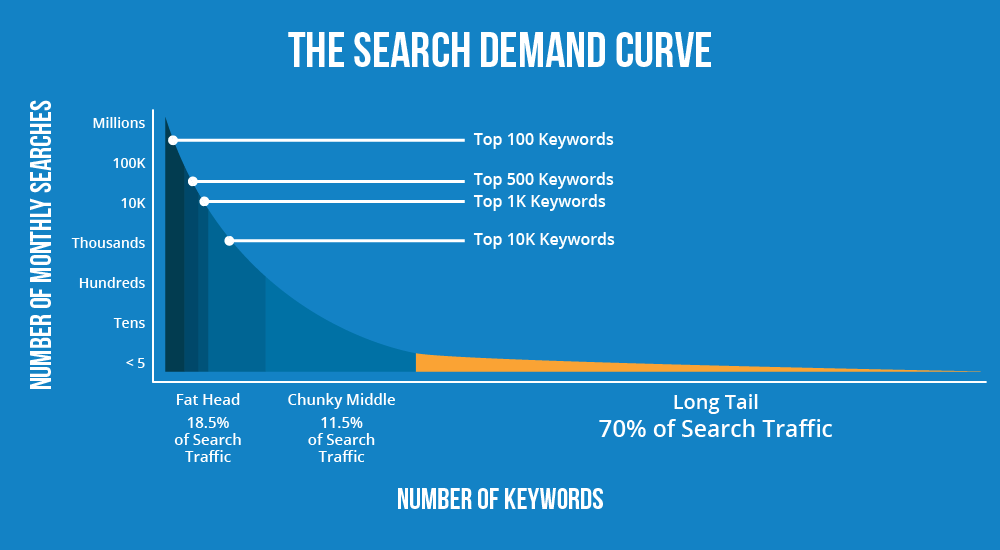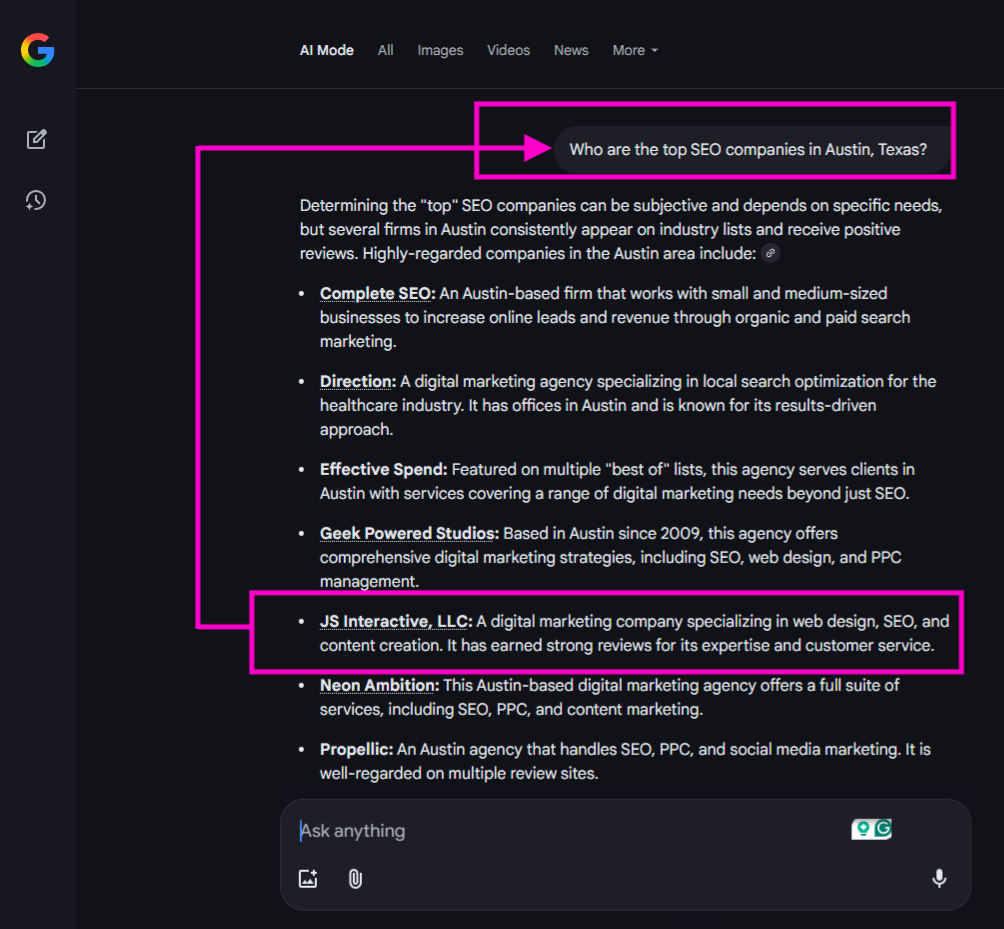Advice from An Austin SEO Company: Know Your SEO Basics

Search isn’t what it was even a year ago. Roughly 58% of Google searches now end without a click, and Google’s AI-powered results often provide people with answers before they ever visit a website.
For Austin businesses, this shift raises the bar.
SEO today is not about chasing rankings. It is about building trust, authority, and relevance so that your business stands out in search.
Site performance and usability play a big part in that. If your site is slow, confusing, or unreliable, you will lose both visibility and trust, no matter how strong your keywords are.
What SEO Means in 2025
Search Engine Optimization (SEO) is about making your business valuable and trustworthy so that search engines want to display it to people.
Think of SEO as an ecosystem. It is not a single tactic but a network of connected efforts, including technical health, content quality, authority, and user trust.
These elements work together to improve visibility.
Even as AI tools and new platforms change how people search, those systems still depend on the same foundation of credible, well-structured content.
Four fundamentals continue to drive results:
- Crawlability: Can search engines easily read and index your site? This includes having a mobile-friendly layout, a clear site structure, and structured data markup that explains your content.
- Authority: Does your site look reputable? Search engines measure this through reviews, backlinks, and whether your content demonstrates expertise and trustworthiness.
- Relevance: Does your content match what people are actually searching for? That also means formatting your answers in a way that works for AI-driven search results and featured snippets.
- User Experience (UX): A fast, accessible, and easy-to-navigate site keeps visitors engaged and signals quality to search engines.
15 Search Engine Tips from Our Austin SEO Company to You
Some people are taking SEO into their own hands thanks to tools like ChatGPT and other online resources.
Knowing the basics provides a solid foundation for growth. By applying these 15 principles we use in our business, you can develop an effective SEO strategy tailored to your own needs.
1. Know Your Target Audience
SEO doesn’t start with algorithms; it starts with people.
If you do not know who you are trying to reach, you cannot create content that connects or converts. Ask yourself:
- What problems are they trying to solve?
- How can I solve their problems?
- What language do they use when they search?
- How do they prefer to get information?
Search behavior is shifting. Approximately 50% of U.S. consumers use voice search daily. This means people are speaking full questions instead of typing short phrases.
Content that mirrors natural language, such as FAQs, conversational titles, and service pages that answer common questions, has a better chance of appearing in both traditional search results and AI-powered summaries.
Build personas to clarify who you are writing for. Use Google Analytics, Search Console, and customer feedback to identify the queries that already bring visitors to your site, and then create content that directly addresses those needs.
Tip: Start with the three questions you hear most from customers and turn them into headlines on your site.
2. Optimize for Questions and Intent
Keywords still matter, but how we use them has changed.
Search today is less about individual keywords and more about understanding what people want to know.
Modern SEO focuses on topics, intent, and context. People no longer type short phrases. They ask questions through voice search, mobile assistants, and AI-powered tools.
Tools like Keywords Tool and SEMrush remain useful for uncovering opportunities; however, your goal is to understand the intent behind the search and provide clear, helpful answers to their questions.
Long-form and conversational queries often bring higher-quality traffic because they reflect specific needs. For example, “who are the best pediatric dentists in Austin open Saturdays” signals much stronger intent than a broad search like “Austin dentist.”
The most effective keyword strategy combines data with real customer insight. Review the questions that come up in calls, emails, or social interactions. When your content directly answers those questions, you improve both visibility and credibility.
Tip: Check the “People Also Ask” box in Google results. Each question is a signal of intent and an opportunity to expand your content.

3. Adapt to AI Search
Google and Bing now deliver AI-powered answers directly within search results. Google refers to these as AI Overviews, and it has also introduced AI Mode for more in-depth, multi-step queries.
Bing offers a similar experience through its Copilot feature. These features mean that many questions are answered without users needing to click through to a website.
This shift does not make SEO obsolete, but it changes the goal. Instead of just chasing clicks, focus on becoming the trusted source that AI relies on.
How to adapt:
- Provide direct answers: Structure content with clear headings, FAQs, and concise responses that AI can cite.
- Use conversational language: Write in a natural, human tone that reflects how people actually ask questions. This helps AI systems better interpret and surface your content.
- Focus on authority: AI pulls from sources it trusts. Expertise, accurate details, and transparent authorship matter more than volume.
- Test visibility: Search your key topics in Google and Bing. See which sites are being cited in AI Overviews or Copilot, and look for gaps you can fill.
Tip: Treat AI Overviews like featured snippets. Your goal is to provide the clearest, most reliable answer, so your brand is chosen as the source.
4. Know Your Competitors
SEO is not just about what you do on your own site. To compete effectively, you need to understand what other businesses in your industry are doing.
Start by identifying your true competitors. In some cases, they will be local businesses in Austin. In others, they may be national brands that rank for the same keywords.
Tools like SEMrush or Ahrefs show which keywords your competitors target, where they earn backlinks, and how their content is performing.
The goal is not to copy but to spot gaps. If a competitor ranks for “roof repair Austin” but lacks content on emergency services, that presents an opportunity for you. If their blog is outdated, publish a more in-depth and up-to-date version.
Tip: Track two or three main competitors over time. Watching how they adjust helps you anticipate changes and stay ahead of them.
5. Analyze Your Content & Build A Content Strategy
SEO is not a one-time project. The content that was effective two years ago may no longer meet today’s standards for depth, accuracy, or authority.
Utilize Google Analytics and Search Console to identify what performs well and what needs improvement.
Google now rewards content clusters over scattered posts. Build a pillar page for the main topic and support it with related articles. This ties into Google’s query fan-out, where one search can branch into multiple related sub-queries. Covering those angles increases your visibility.
Format your content so it is easy for both people and AI to understand. Use clear headings, FAQs, bullet points, and concise answers that Google can pull into snippets or AI summaries.
Tip: Focus on being the most helpful answer, not the most frequent publisher.
6. Know & Use Keyword-Focused Meta tags
Meta titles and descriptions inform both people and search engines about the content of your page. Keep titles under 60 characters and descriptions under 160.
Use tools like EZLocal Meta Title Counter to check length.
If your site runs on WordPress, the SEOPress plugin makes managing metadata simple. It also displays previews, so you can see how your tags will appear in search results.
Go beyond metadata with schema markup. Adding structured data for your business details, reviews, or FAQs makes your pages eligible for rich results and AI Overviews.
Tip: Treat meta tags like ad copy. The goal is not only to rank but to earn the click. Write in a way that makes someone want to choose your page over all the others.
7. Optimize Your Images
Images impact both user experience and SEO.
Large files slow your site, and page speed is part of Google’s Core Web Vitals.
To keep performance strong:
- Compress images before uploading using tools like TinyPNG, Squoosh, or Imagify.
- Use modern formats like WebP or AVIF.
- Add responsive sizes for mobile.
Accessibility also matters. Use descriptive alt text and keyword-friendly file names so search engines and screen readers understand what each image shows.
Tip: Test your site in Google’s PageSpeed Insights to find which images slow pages down.
8. Cover Your Technical SEO Basics
Strong SEO starts with a solid technical foundation. If search engines cannot crawl, index, or load your site quickly, your content will be of little value.
Focus on these essentials:
- Crawlability and indexing: Maintain a clean site structure, submit an XML sitemap, and avoid blocking important pages in the robots.txt file. Check Google Search Console for crawl or indexing errors.
- Core Web Vitals: Google now measures Interaction to Next Paint (INP) instead of First Input Delay. Fast, stable sites perform better in search (Google Search Central).
- Mobile-first design: Google indexes mobile versions first. If your site is difficult to use on a mobile device, your rankings will suffer.
- Structured data: Add schema markup for business details, products, FAQs, or reviews to help search engines understand your content and display rich results. Tools like SchemaPro make this simple.
Tip: Audit your site quarterly. Technical issues often arise after design changes, plugin updates, or the addition of new content. Staying proactive keeps your foundation strong.
9. Prioritize Local SEO
Local visibility is essential for Austin businesses. Start with a complete Google Business Profile (GBP) that includes accurate details, hours, and photos, and keep it up to date with regular updates.
Encourage and respond to reviews. Fresh, positive feedback builds trust and improves rankings in the local pack.
Add hyperlocal content that reflects your community, such as neighborhood pages or posts tied to local events and activities. Consistent citations across directories, such as Yelp, Apple Maps, and industry-specific sites, also strengthen local SEO.
Even in AI Mode and other new search experiences, Google still pulls heavily from local sources, reinforcing how important your GBP, reviews, and local content truly are.

Tip: Many voice searches have local intent. Optimize for phrases like “near me” or “open now” to capture those queries.
10. Use SEO-Friendly URLs
A good URL is clear, descriptive, and easy to read. It should inform both users and search engines about the page’s content.
While short URLs were once the standard, Google’s John Mueller has clarified that URL length is not a ranking factor. What matters most is clarity, structure, and consistency. A descriptive URL that accurately reflects the page content is far more valuable than one that’s simply short.
Here’s how to get it right:
- Match the URL closely to the page title or topic.
- Use descriptive words rather than long sequences of numbers or parameters.
- Use keywords naturally (for example: yourdomain.com/austin-seo-services).
- Separate words with hyphens for readability.
- Match the URL closely to the page title or topic.

Tip: If you change a URL, set up a 301 redirect to preserve any existing SEO value.
11. Have a Good Internal Link Structure
Internal links guide visitors through your site and indicate to search engines how your content is organized and related.
A clear structure makes your site easier to navigate and strengthens your authority. Here are a few ways to keep it effective:
- Link to relevant pages naturally within your content.
- Use descriptive anchor text so readers and search engines know what to expect.
- Give priority to pages, such as services or locations, by assigning the most internal links.
- Avoid broken links or orphan pages that are hard to reach.
Tip: Use blog posts to link to service or location pages where it makes sense, and link those pages back to supporting content. This creates a natural flow and reinforces topical authority.
12. Have an Inbound Strategy
An inbound strategy is about attracting customers by building value before they are ready to make a purchase. For SEO, this means earning visibility and trust beyond your own website.
Key areas to focus on:
- Partnerships: Collaborate with local organizations or industry groups to earn mentions and backlinks.
- Social visibility: Share content on platforms your audience uses to expand reach and generate brand signals that support rankings.
These activities demonstrate to search engines that your brand is active and trustworthy, while also helping you reach customers earlier in their decision-making process.
Tip: Track where your business is mentioned online. Positive mentions and backlinks from reputable sites can boost both authority and visibility.
13. Have the Right Tools
SEO works best when you measure progress and adjust. The specific SEO tools matter less than the habit of using them consistently.
Track performance with analytics platforms, monitor indexing and search visibility, and use keyword research tools to spot new opportunities. Select the tools that align with your budget and workflow.
What matters is that you review the data regularly and take action accordingly.
Tip: Set a monthly SEO check-in. Review traffic, rankings, and top-performing pages, then decide on one or two updates to prioritize. Small, steady improvements compound over time.
14. Consistency Builds Authority
Search engines reward brands that show up reliably. Consistency is not just about posting often; it is about building E-E-A-T, Google’s measure of Experience, Expertise, Authoritativeness, and Trustworthiness.
Ways to stay consistent:
- Publish with purpose: Create content that answers real customer questions, and refresh older posts to ensure they remain accurate.
- Maintain your presence: Keep your Google Business Profile up to date with hours, updates, and new reviews.
- Show expertise: Use clear authorship, cite reputable sources, and highlight your experience to reinforce credibility.
Together, these signals build authority in your niche and help search engines see your business as a trusted source.
Tip: Quality beats volume. A steady flow of useful, accurate content will outperform frequent but shallow updates.
15. Always Be Learning
Search never stands still. Algorithm updates, AI-powered results, and new ranking factors keep changing how people find information. Staying informed helps you adapt before competitors do.
Simple ways to keep learning:
- Follow trusted industry sources, such as the Google Search Central Blog.
- Set alerts for Google algorithm updates to stay informed about shifts in ranking.
- Test new tactics on a small scale before rolling them out on a wider scale.
Tip: Dedicate time each month to review one new SEO update or trend. Small, steady learning keeps your strategy sharp without becoming overwhelming.
Build Authority and Trust with Help from JS Interactive
SEO in 2025 is about more than rankings. It is about trust, authority, and showing up where your customers are searching. If you are ready to strengthen your online presence, we can help.
Contact us today for a consultation, and let’s turn your website into a tool for growth.